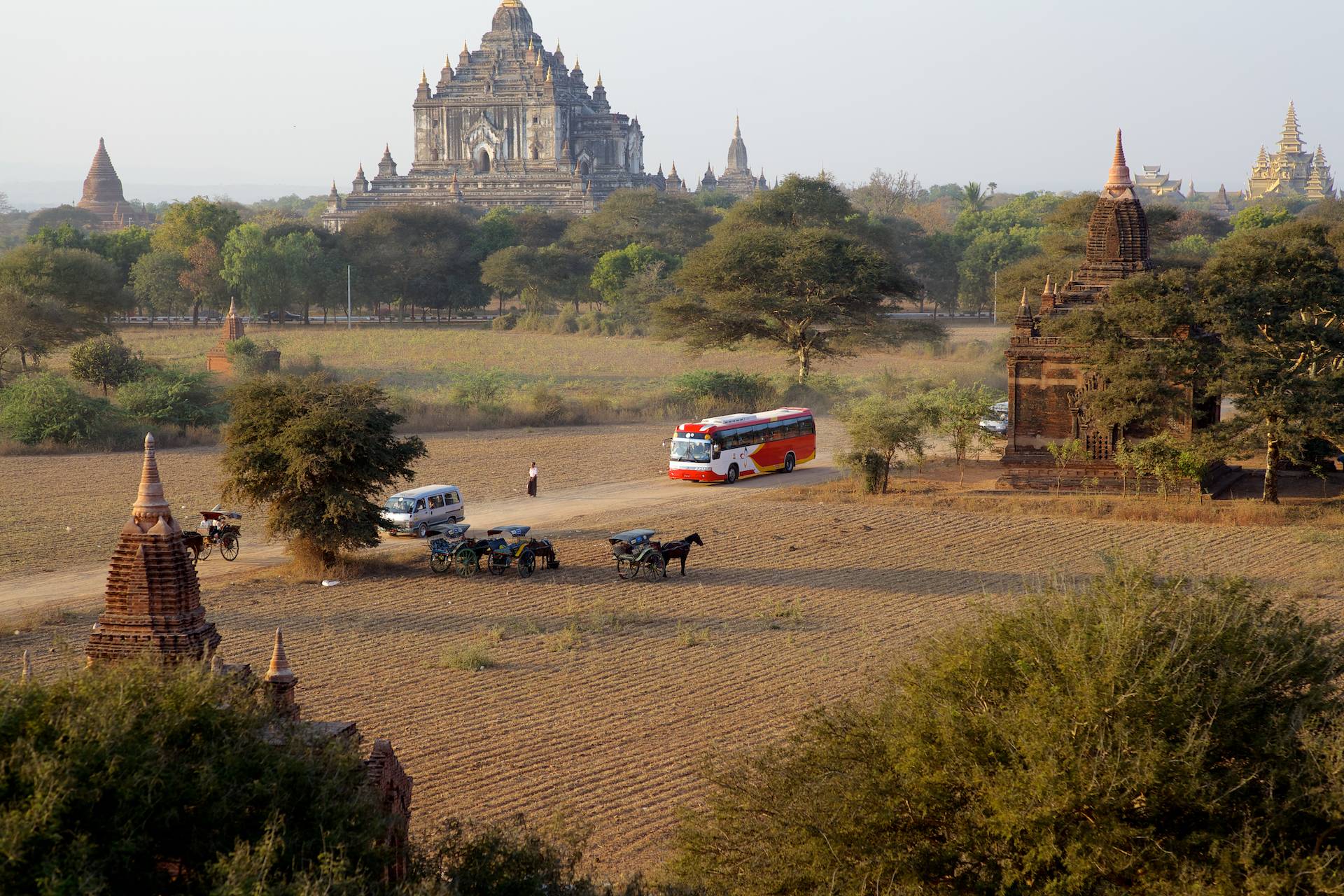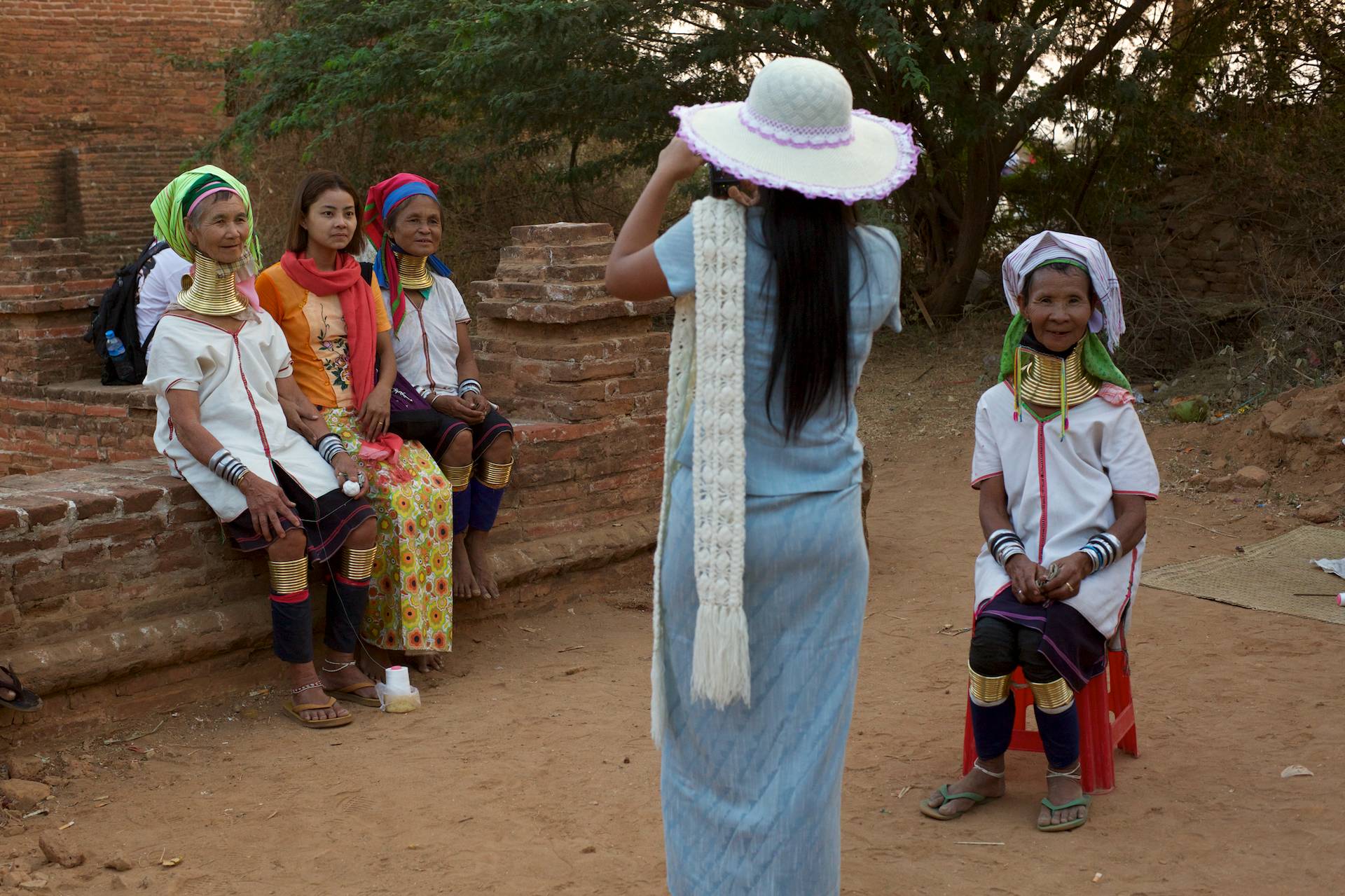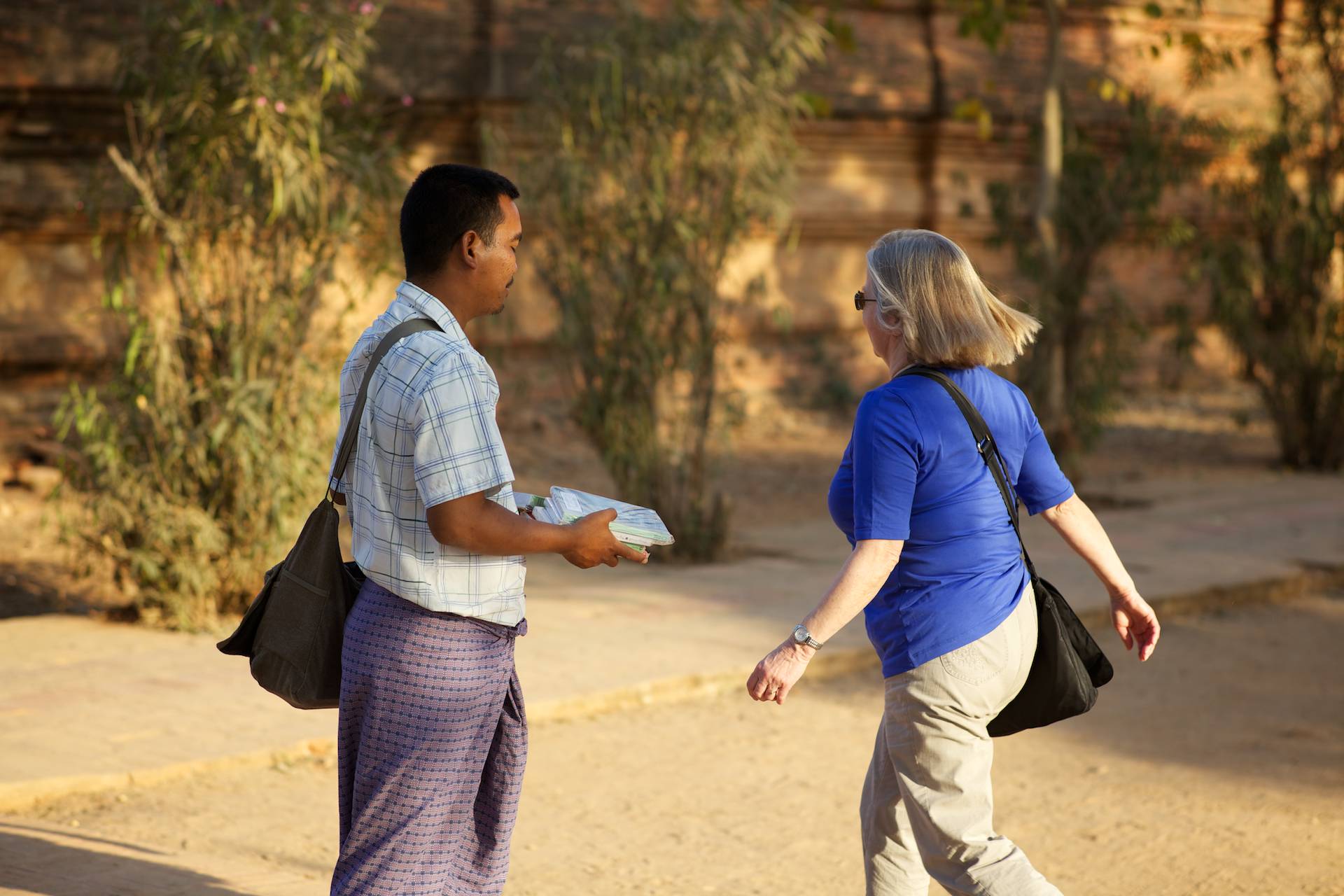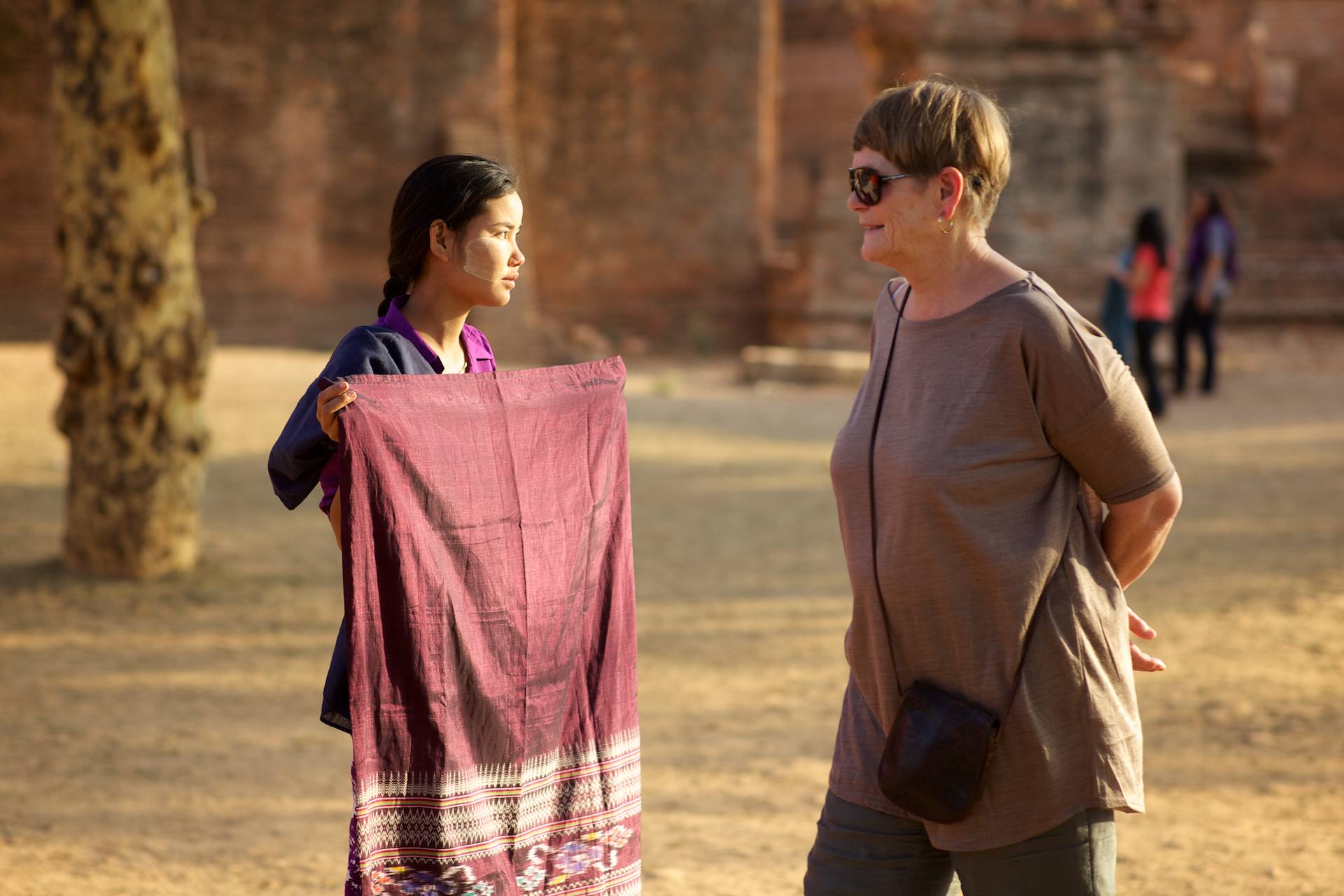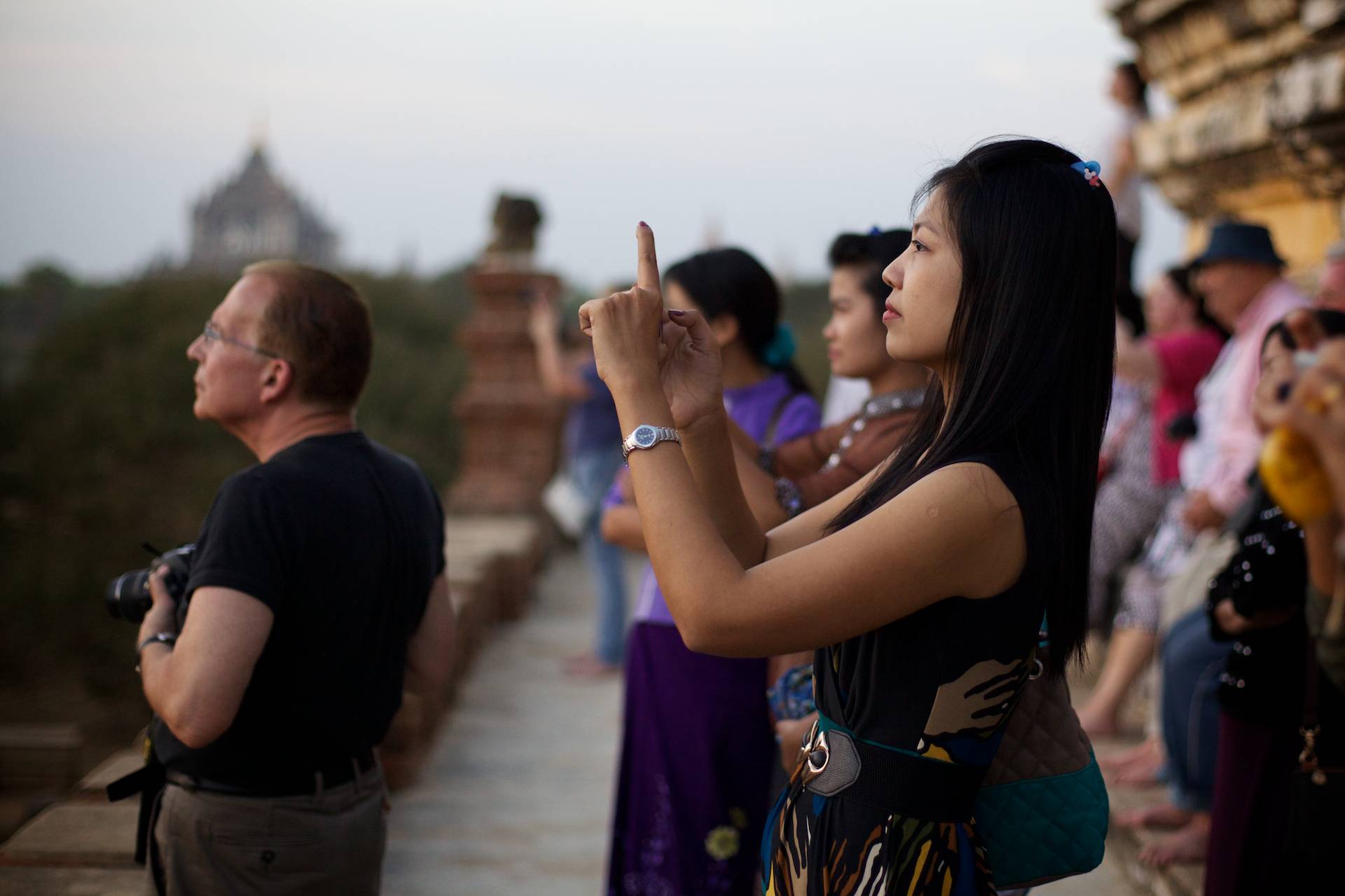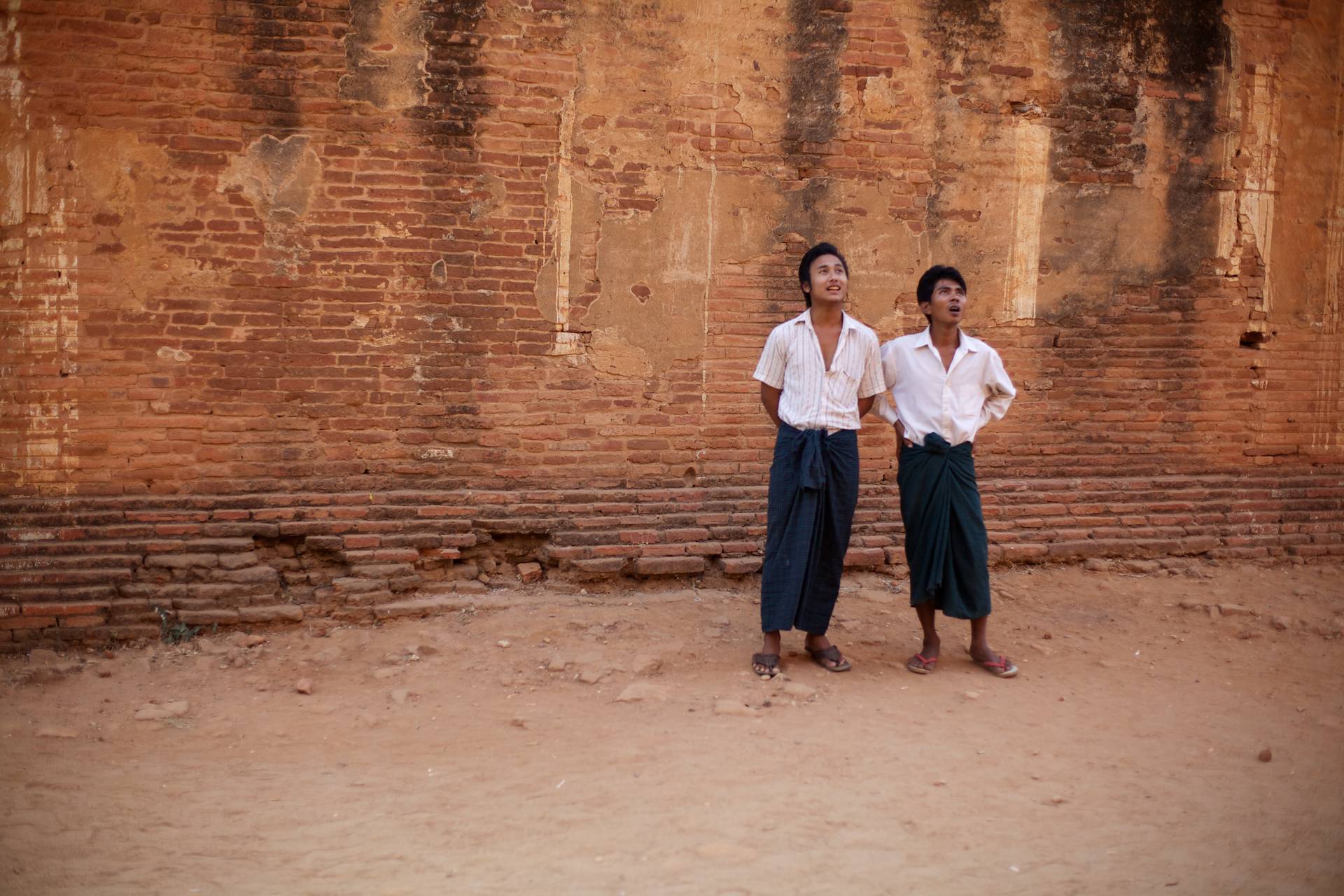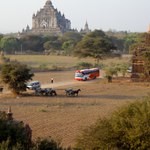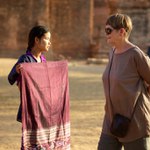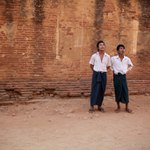Nameless Ritual
Late afternoon at Shwesandaw Paya, one of more than 2000 temples in the plains of Bagan, Myanmar. Once, there was a city here, the cosmopolitan capital of an empire. It collapsed in the late 13th century. What remains are fields and goat pastures dotted with pagodas – reminders of erstwhile splendour. It is an incredible sight.
Today, groups of street vendors inhabit many of the pagodas. They sell sand paintings, textiles, jewellery, lacquerware and cold drinks to tourists and pilgrims. The vendors are young, mostly in their teens and early twenties. They know each other well. They pay a yearly licence fee that binds them to a specific place. Little communities form, and belonging to one of them is an integral part of growing up in Bagan. It is a lighthearted atmosphere. People tease each other, joke and laugh. There is not much work; the midday heat has not yet waned and only a handful of tourists are here.
Around 4:30 p.m. Shwesandaw gets busy. More vendors arrive and set up their stalls. Three "long-neck" Palaung women arrange red plastic chairs to pose for photographs. Five or six children are selling postcards. They come here every day after school.
Then, shortly after 5 p.m., dozens of buses, taxis and horse-carts appear on the dusty road that leads to the stupa. Several hundred tourists come here every evening to witness the sunset. Tired of a day of sightseeing, they try to escape the vendors. They rush to climb the pagoda in order to secure a place to get a real glimpse of the scene so often depicted on Bagan postcards, absorbing the moment by reproducing the iconic image themselves. Focused on the horizon, cameras their paraphernalia, they are rapt participants in a nameless daily ritual.
The vendors at the bottom of the pagoda take a break. They chat and wait for the night to fall and the tourists to descend, knowing that they will have one more chance to sell a thing of two before calling it a day and heading home.
Privacy Policy
Plain and simple: I take the principle of minimal data collection serious and try hard not to collect or process any personal data beyond the basics required to serve and maintain the website.
Specifically,
- We do not use cookies.
- We do not use third party analytics.
- There is no contact form that would allow you to enter personal data.
- We do not use advertising to run this website.
In order to serve this website, your IP address and information about your browser, operating system and screen resolution need to be collected and processed. theotherimage.com is a simple, handcrafted, static website hosted by Netlify. It uses fonts by Adobe Fonts (formerly Typekit). Both Netlify and Adobe automatically collect usage data, either generated by the use of this website or from the service infrastructure itself. This data is used for accounting and analytic purposes as well as for technical maintenance by these two companies. Neither Netlify nor Adobe use cookies to track you. Specifics can be found in their respective privacy policies.
The videos on this website are hosted by Vimeo. Depending on your browser configuration, Vimeo may use cookies and other tracking technologies as stated in their respective privacy policies.
If you have any questions about this privacy policy, please write to: Martin Saxer, LMU Munich, Department of Social and Cultural Anthropology, Oettingenstr. 67, 80538 Munich, Germany.
This privacy policy has been updated on 30 December 2018.
![[ the other image ]](/images/logo/toi-logo_2x.png)

